Nage Libre: Rasen no Soukoku (NAGE LIBRE 螺旋の相剋), released 2/28/1997, developed by Varie
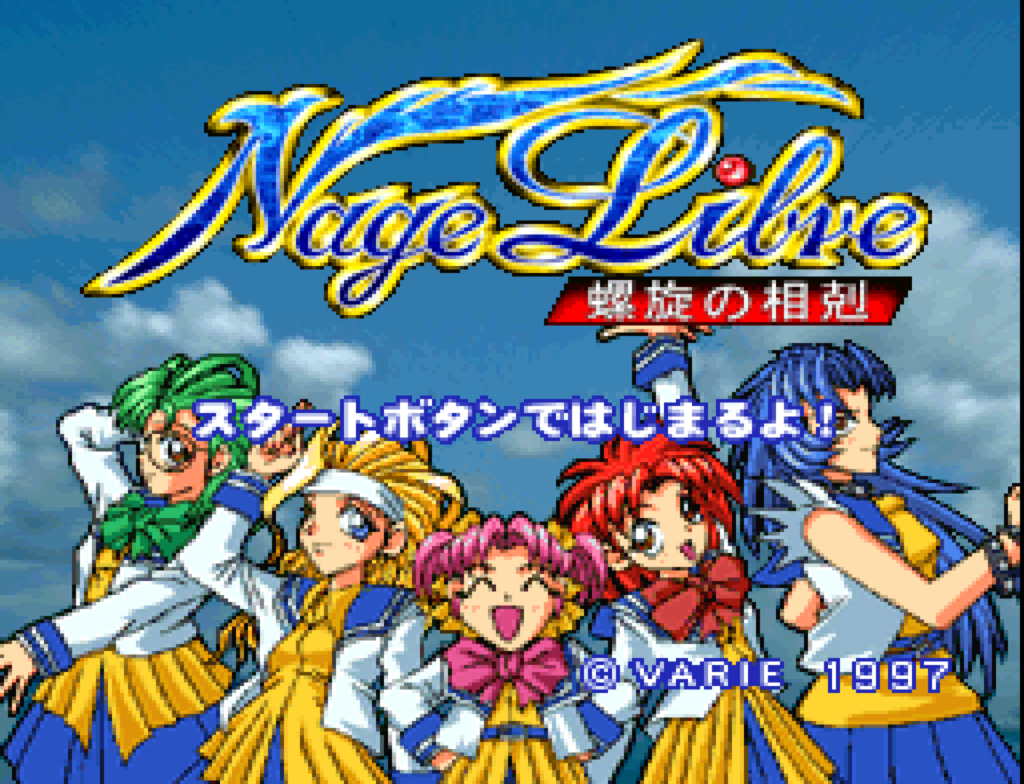
This is a sequel to the original Nage Libre for Super Famicom. Like its predecessor, it’s quite an obscure game that obviously never sold well. Right now on ebay you can get the original super famicom game for $450 and this game for $250, which is by far the highest price I’ve ever seen for an SRPG on either system. So obviously I did not get the game, so without the instruction booklet my understanding of the system is limited — unlike the SFC game there is almost nothing about the game on the Internet.
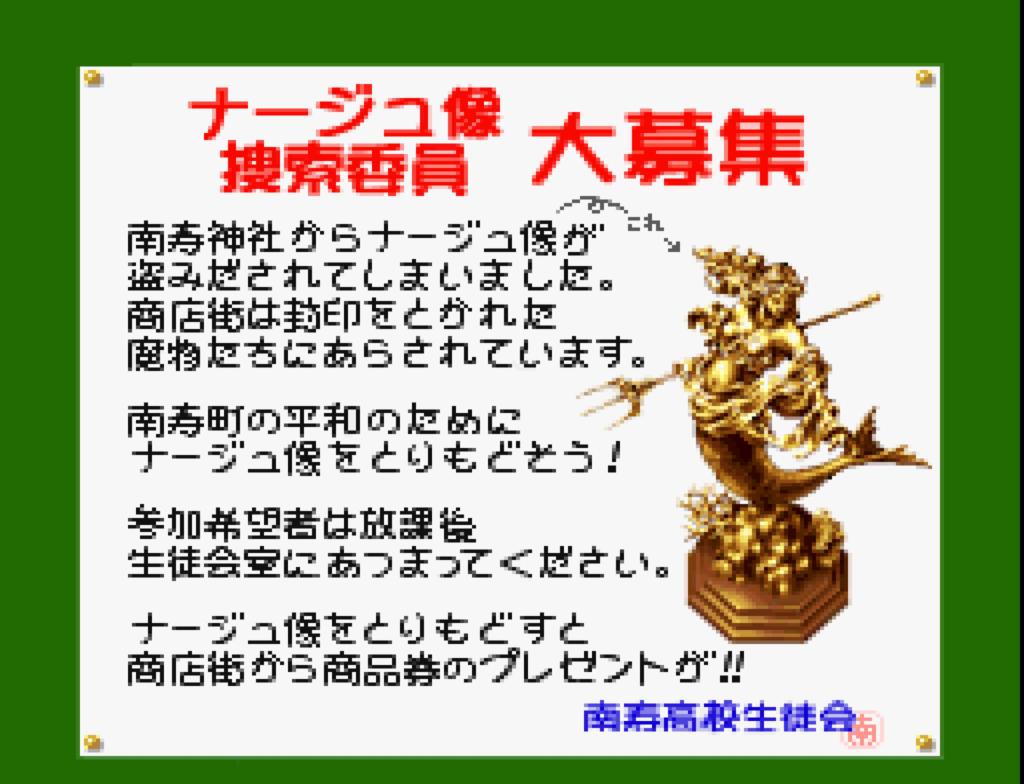
The story is not a direct sequel to the first game, but has a similar idea. The Nage statue is stolen from a temple near the town’s high school, causing monsters to come into the world. Five high school girls go through a portal to track it down.
The graphics are strangely worse than the SFC game. As with the SFC game this is supposed to be a fanservice game, but compare the in-battle graphics:
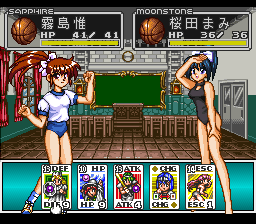
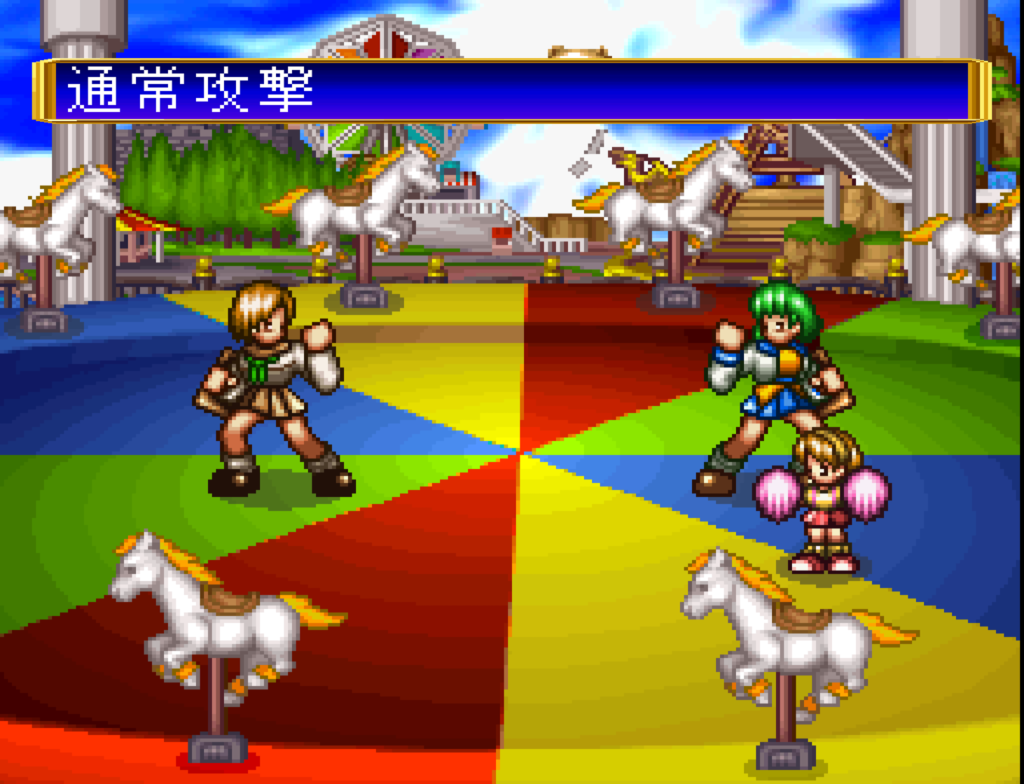
The gameplay is based on the first game but they made a number of changes. The movement is no longer on a grid but an open system; this makes it a little difficult to know when you are in a valid space to move or within range of a character to fight them.
As with the first game you use cards in battle, but some changes were made here as well.
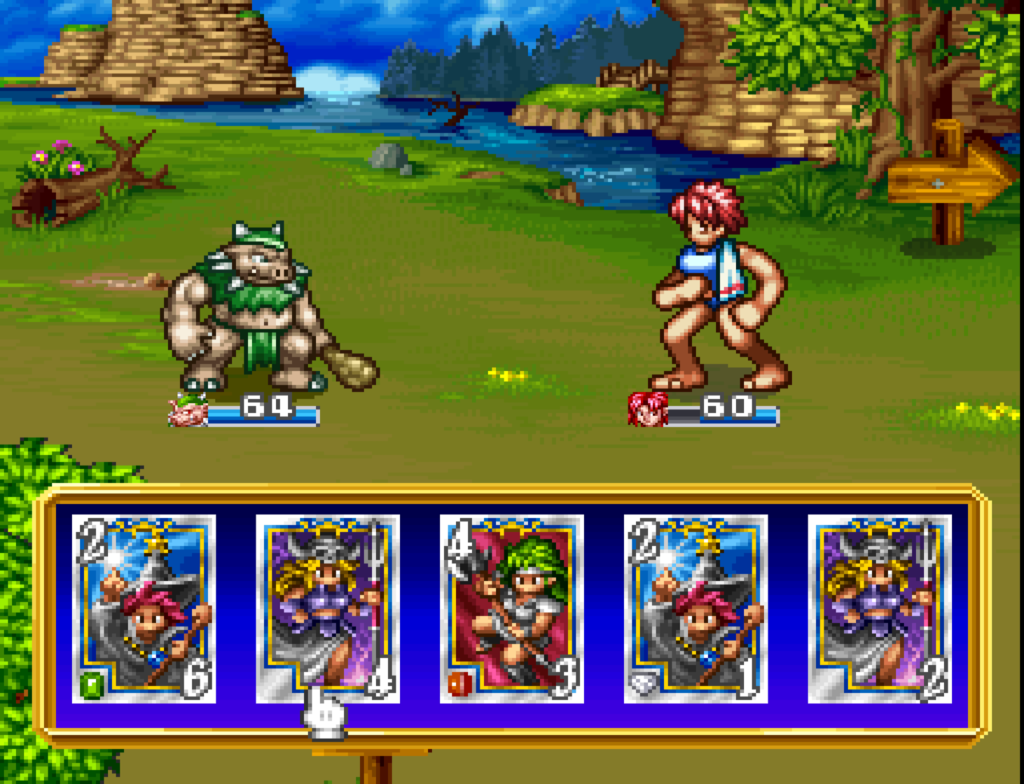
Rather than having several rounds in each combat, there is only one. They also retained only attack cards — escaping and defending are now free actions you can take instead of using a card, and all non-attack cards were removed. Instead, there are three basic kinds of attack cards: physical, magical, and special. Certain characters (and certain club choices) are better at magic than physical attacks. On the whole I found the SFC system a little more robust and strategic; it is true that the PSX version avoids the issue where you get into a combat with crappy cards. But that put some strategic value in the original system because you had to do some planning and could not just use the strongest cards you had available. Here I found myself more often just always picking the strongest attack or magic cards, and there didn’t seem to be much of a reason not to do that. The stock cards are also gone (as is money completely).
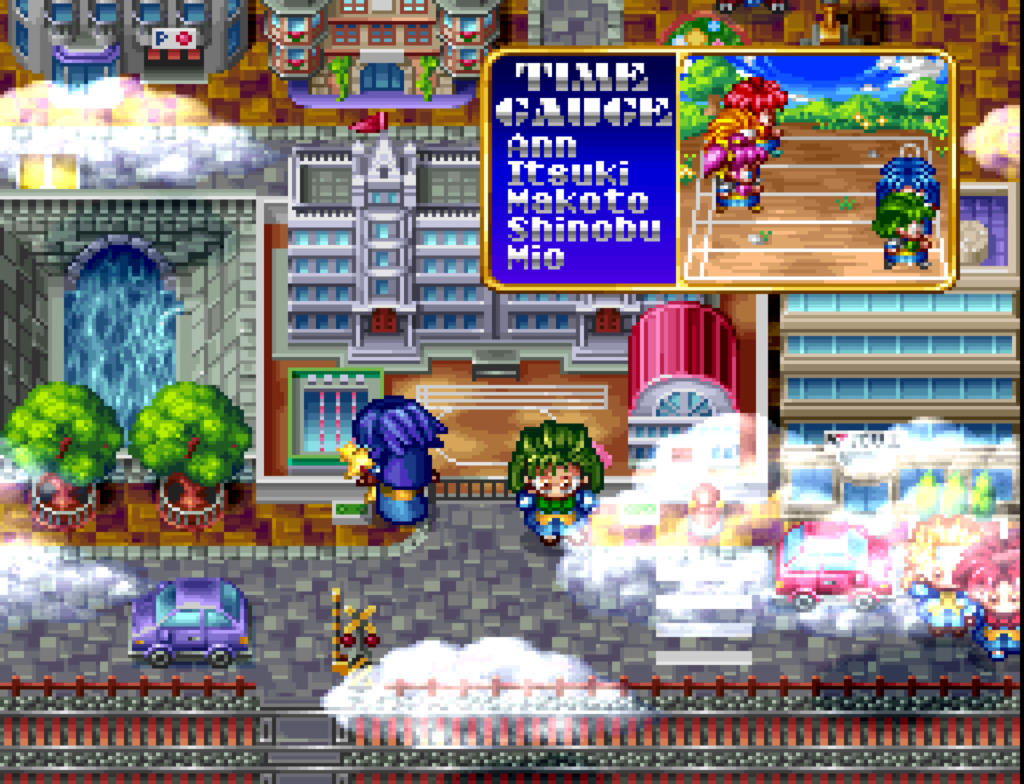
The game has a lot of magic spells. Some of them can target the units surrounding the target (who are providing support). Others are debuffs/buffs. But the magic system is a bit opaque without the instructions because sometimes I couldn’t cast certain spells and I didn’t know why. The debuff spells never seemed all that useful.
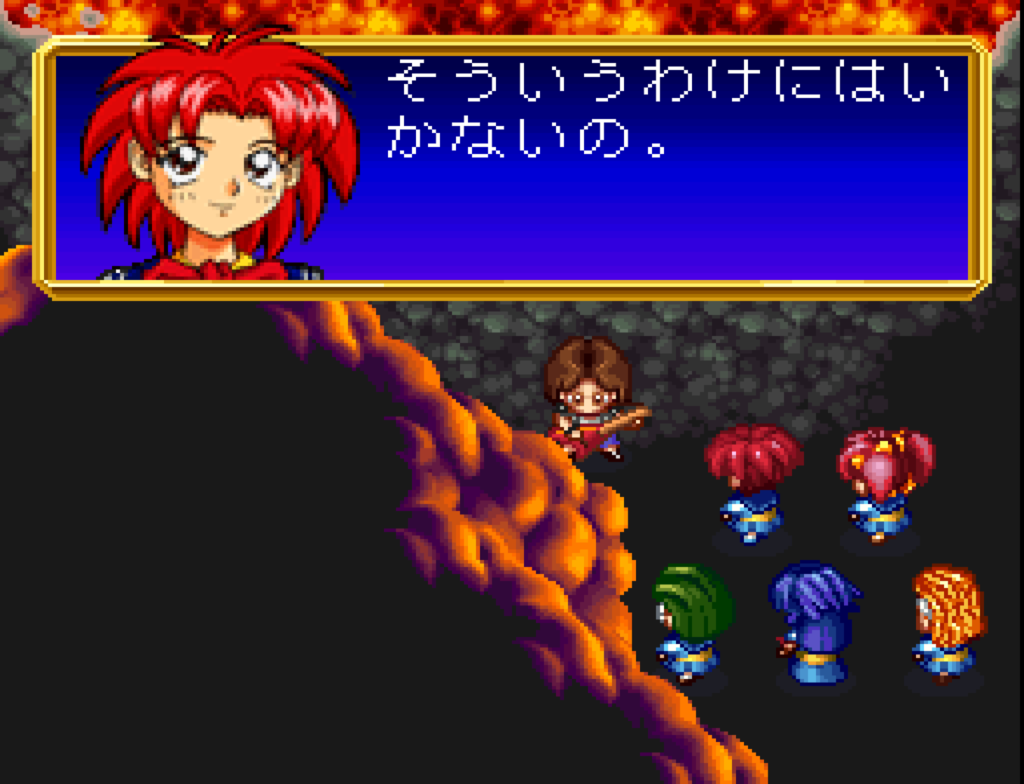
Unlike the first game this does have a clear EXP gauge although characters only level up after a battle.
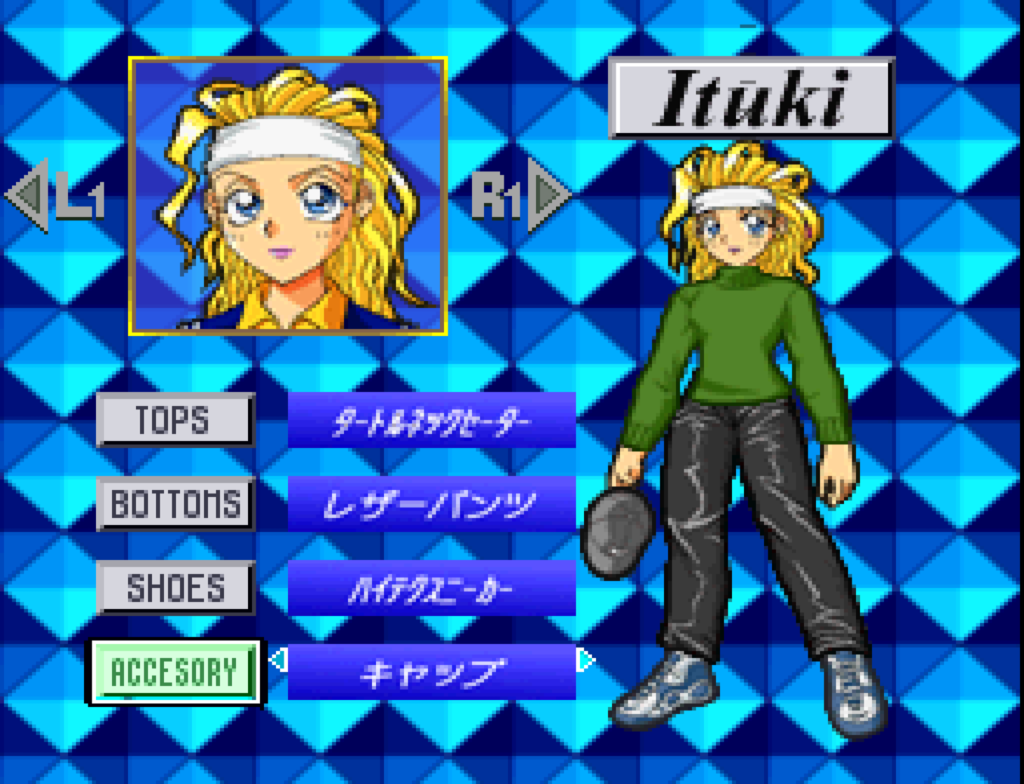
The club and costume system are back, but they work a bit differently. There are fewer school clubs to choose from, but they have clearer effects — for instance, the cooking club can heal, and the archery club attacks from a distance. I don’t know if the compatibility chart from the first game came back, but on the whole the club system seems better here.
The costume system lets you pick a complete outfit from four options (you get a huge variety of clothing from chests and enemies). However, I have no idea what the purpose of the costumes is. There is no listed in-game effect for them, and you only see the character models on this screen between battles. If you hit the circle button you’ll get a judgment of the outfit, but I have no idea if this judgment represents an actual in-game effect; I made sure everyone was on what sounded like the best judgment.
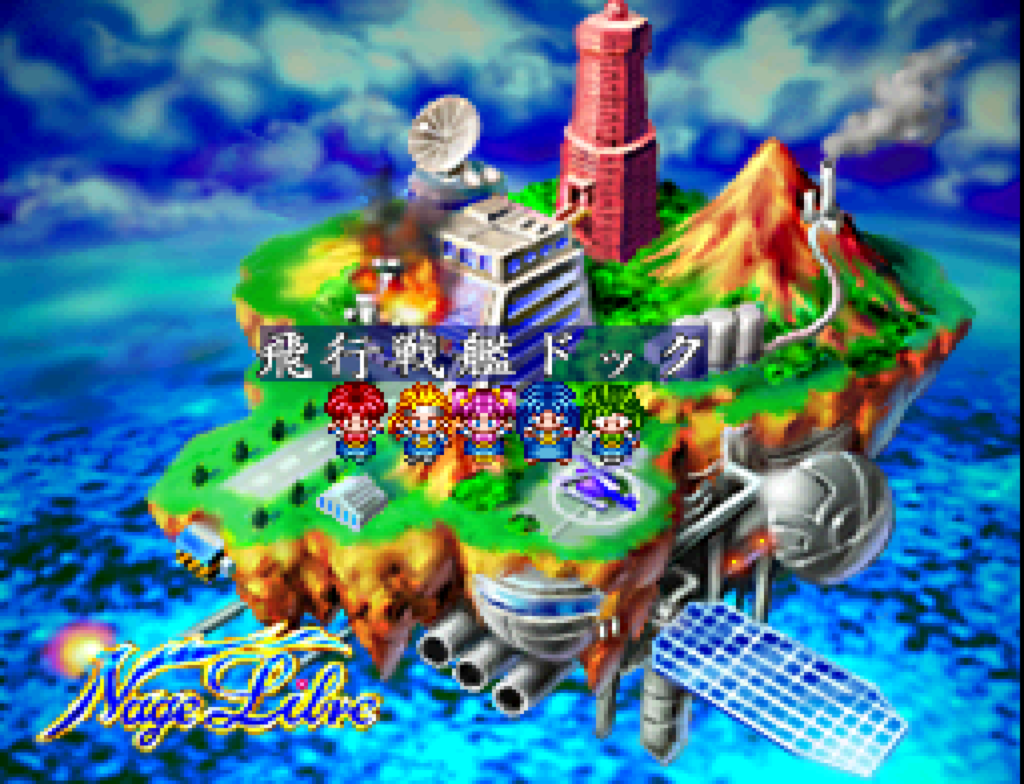
The story is pretty basic although maybe slightly better than the first. It turns out that students from the Bairin School, led by Kamizaki Kaoru, want to get the Nage statue — her goal was to drive the main characters out of their area so her dad could build a shopping center there. But it eventually turns out she was being used by a guy named Kurosawa, who steals the statue.
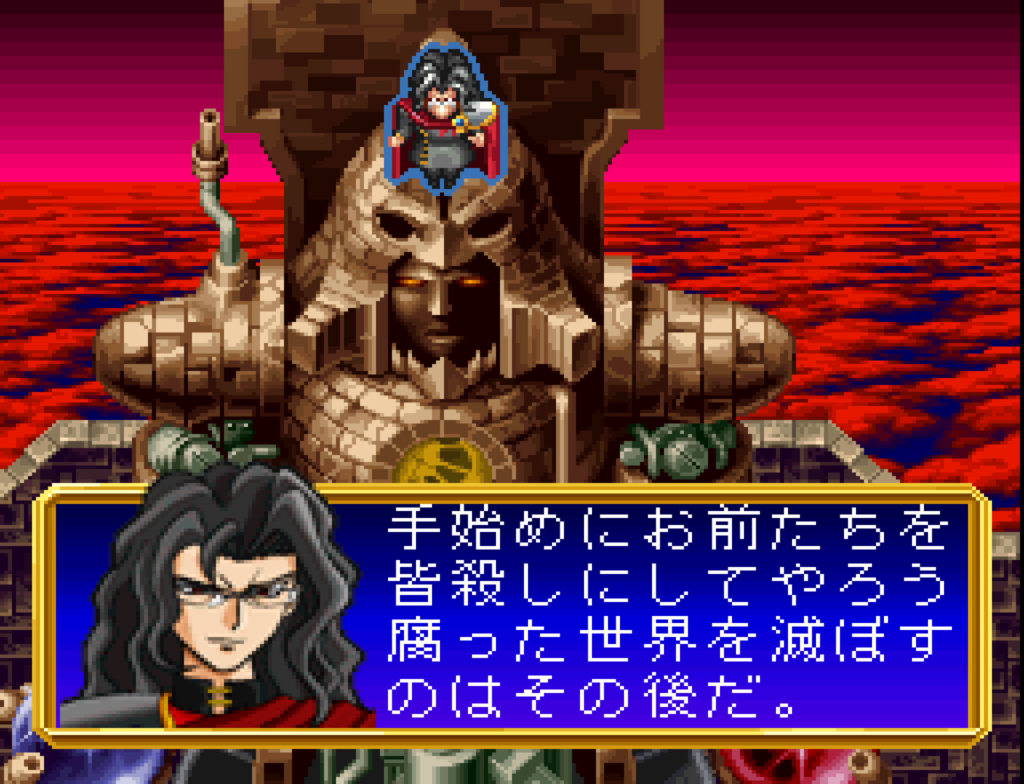
His goal is just the usual “take over the world and cleanse it” idea. The ending is confusing — Nage herself appears and uses the emotions of the main characters to restore all the worlds, but then blows up because one of the characters’ purity is too strong. Then the main characters return to their world and get tickets for a Hawaii vacation.
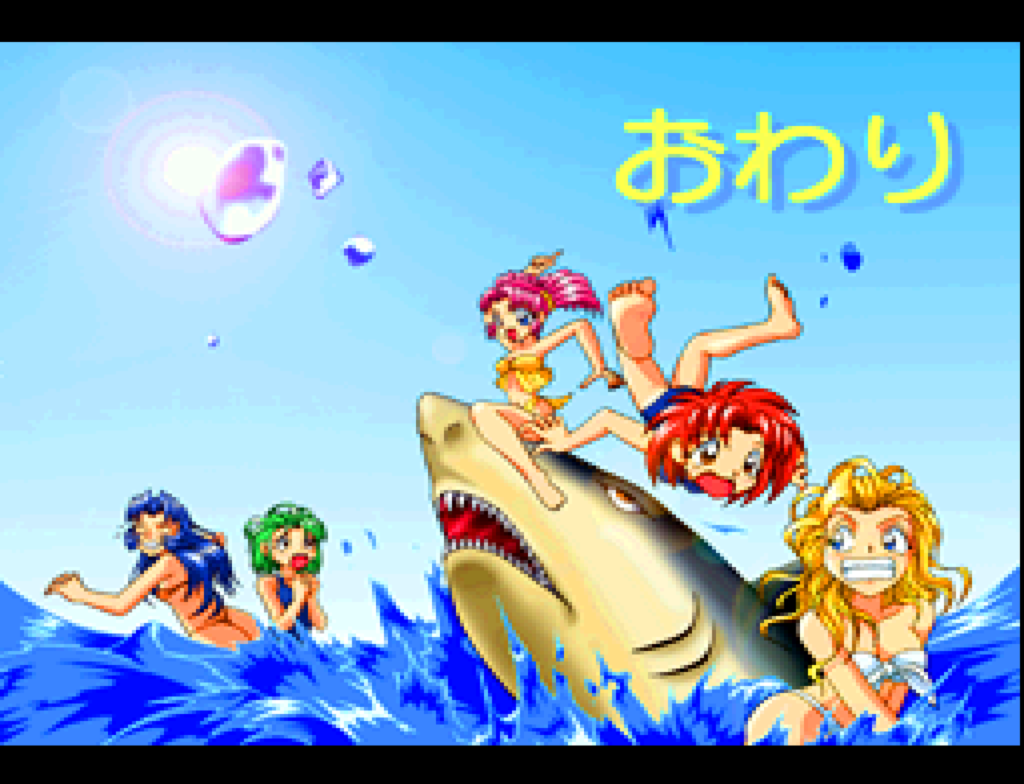
This game is really not worth playing. The first game was OK and the card system at least provided some interest, but almost everything about this game is worse than the first one, and it just felt tedious and boring to play through. Even if you like fanservice bishoujo games the content this game delivers is pretty poor.
Varie soon got absorbed by another company called Layup and so there are no more Nage Libre games, which is probably a good thing.
Wow, those graphics. The screen of the town looks a lot like Villgust.
If they are not good games why did they got so expensive over time?
I think the used price is more about how rare the game is than how good it is.